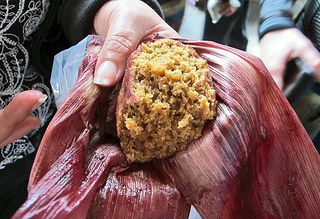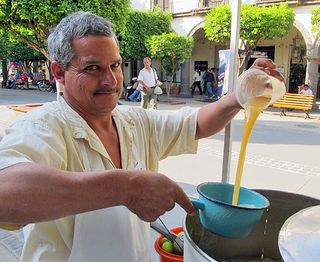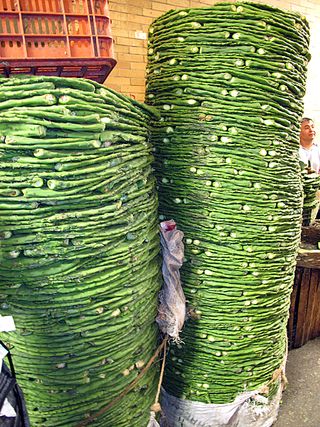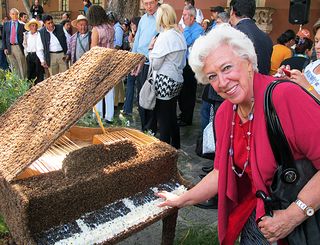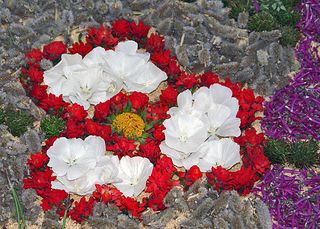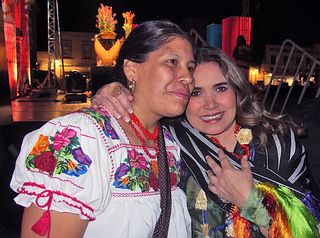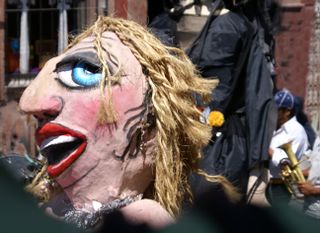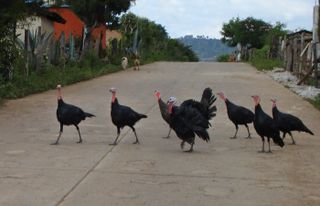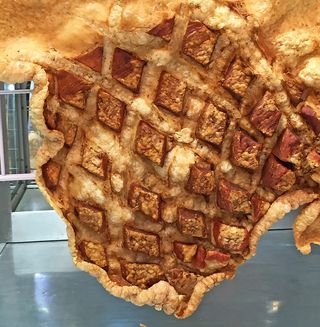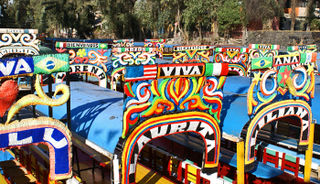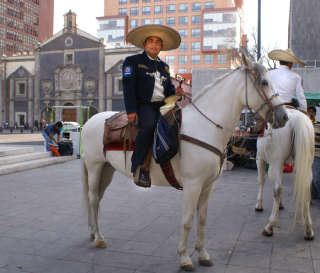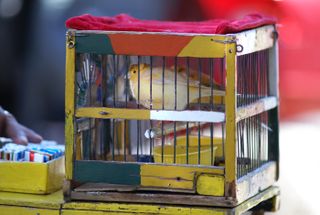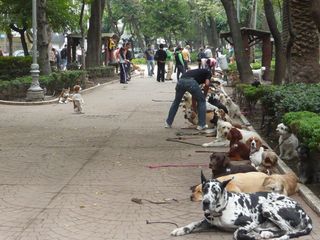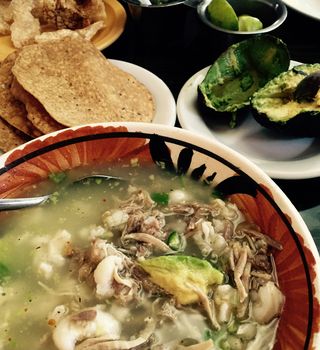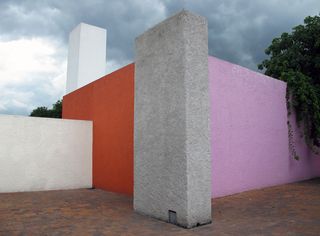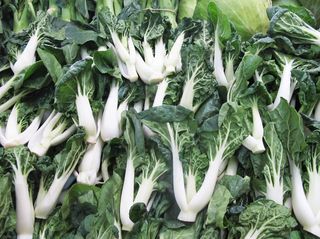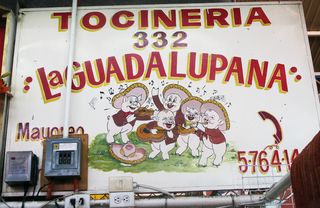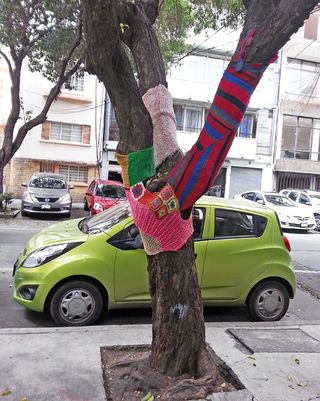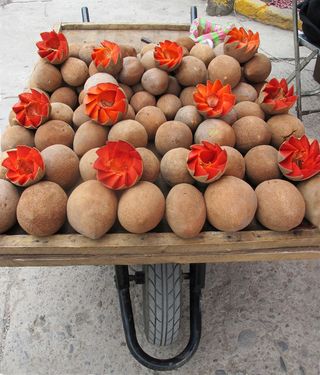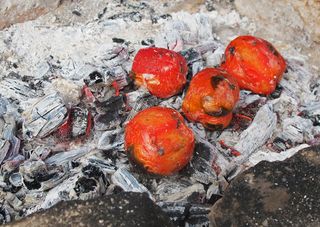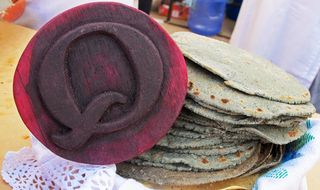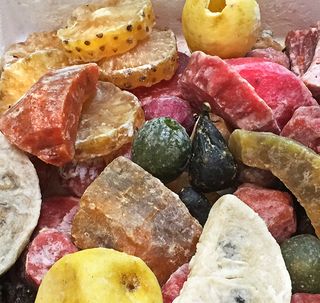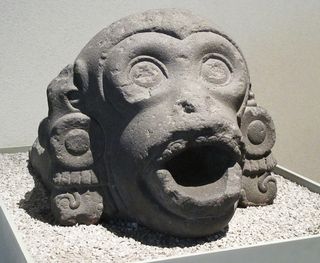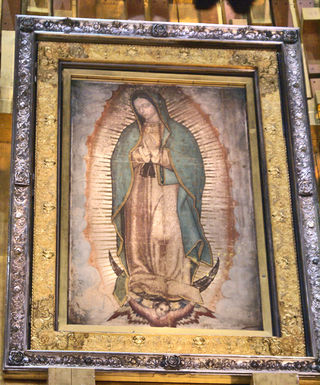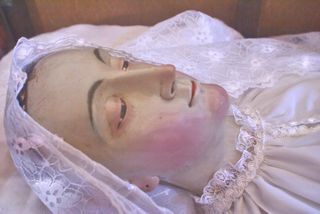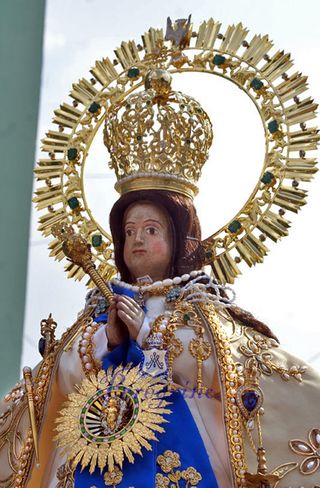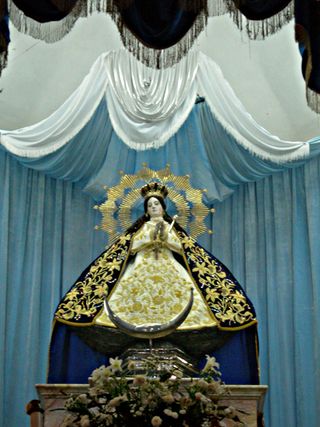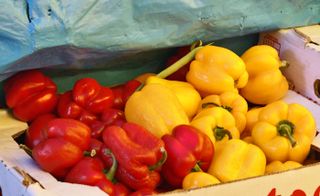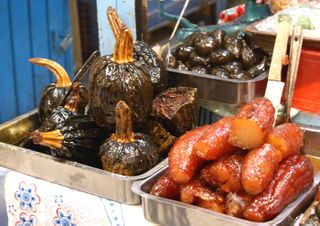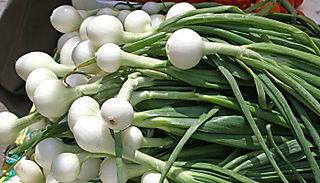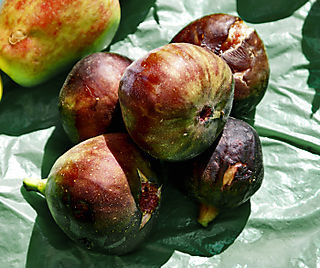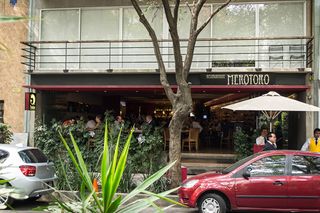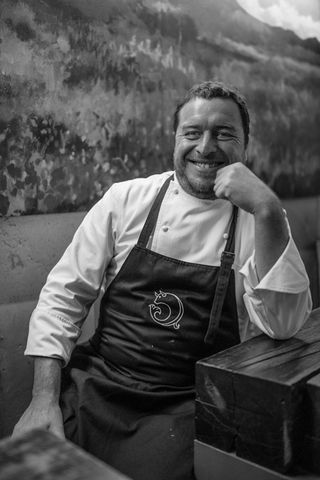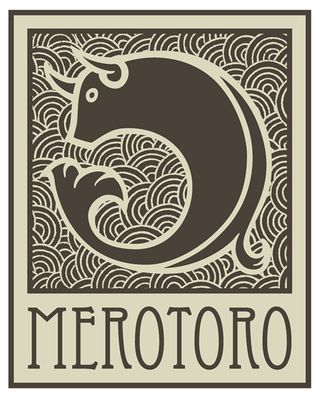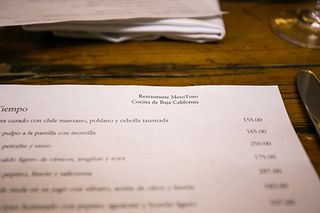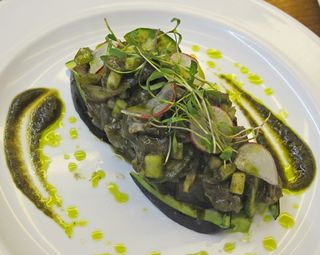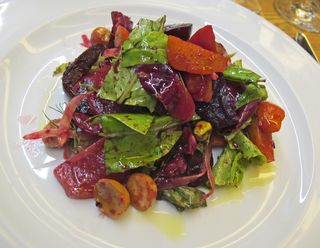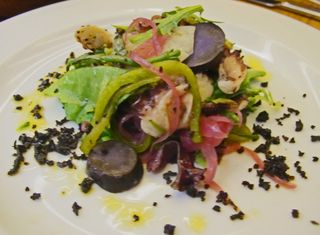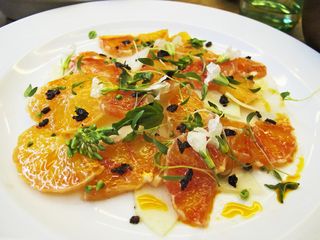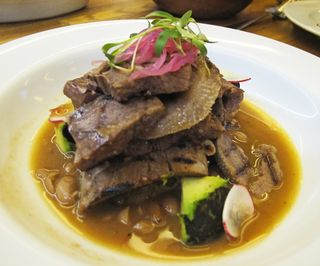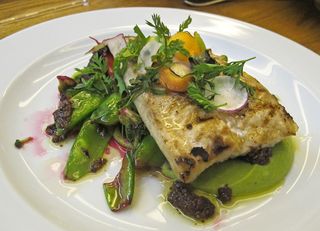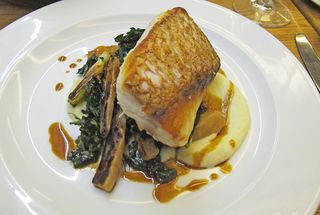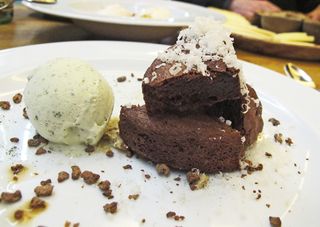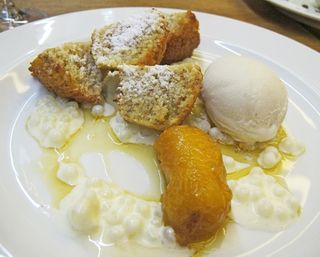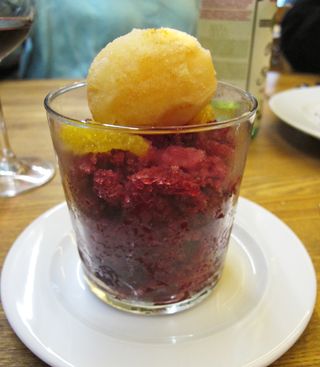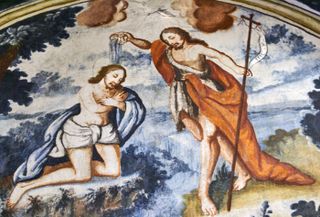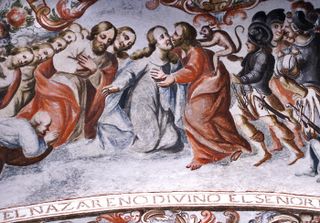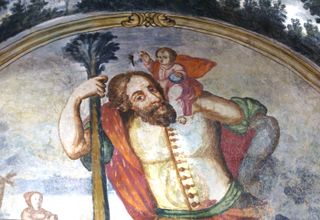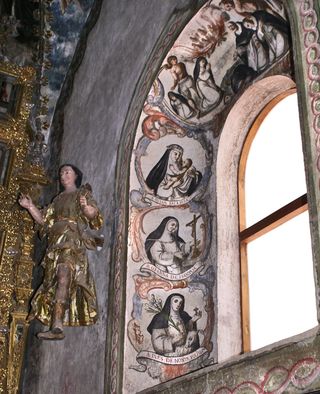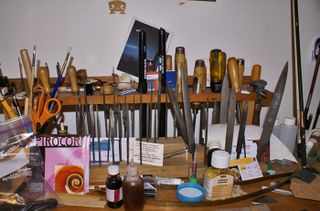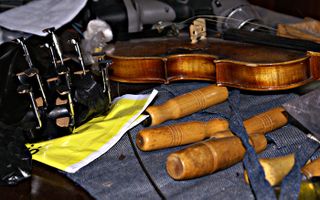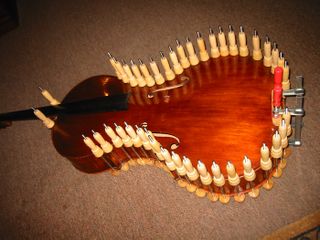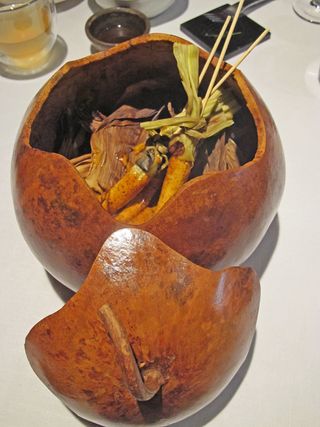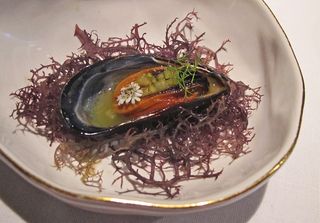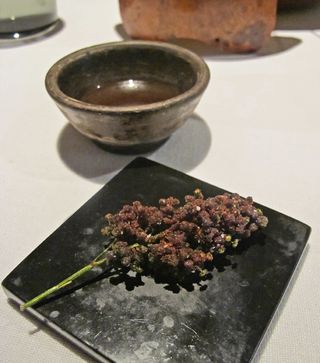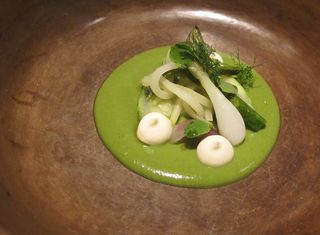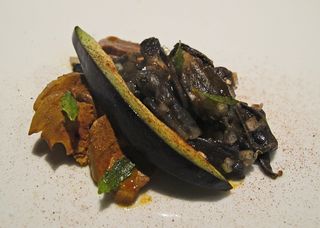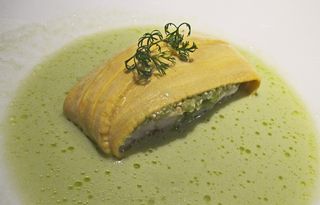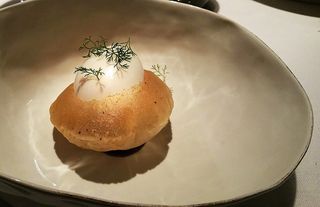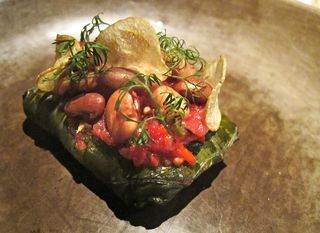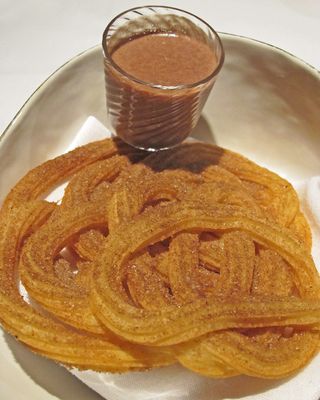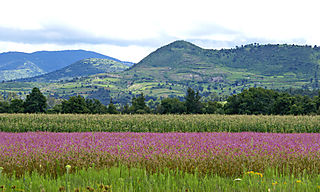
North-central Michoacán is frequently and with much reason called paradise on earth. Autumn's wildflowers, ripening corn, green mountains, and a partly cloudy sky combine to give you the sense that 'paradise on earth' just might be exactly where you are: in this case, near Senguio, Michoacán.
The state of Michoacán is well-known both for its lovely scenery and its even more lovely–and delicious–regional cooking. The indigenous Purépecha kitchen, in particular, is Mexico Cooks!' favorite. If you look back at the Mexico Cooks! archives (found listed on the right-hand side of this page), you'll see many, many articles about this marvelous cuisine, which dates back to pre-Hispanic days.
Misnamed "Tarascos" by unknowing 16th century Spanish invaders, the Purépecha have, just within the last 25 to 30 years, largely reclaimed their actual tribal name. Nonetheless, one of the most popular dishes in the Michoacán culinary repertoire bears the name sopa tarasca (Tarascan Soup).
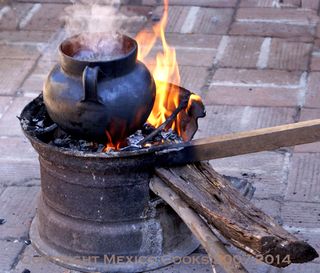
Not precisely traditional, but certainly not modern, this pot of beans is cooking over a wood fire built in a deep tire rim in an open patio in Tzintzuntzan, Michoacán.
You might well ask, "Sopa tarasca must be a pre-Hispanic dish, right?" Or maybe, "Sopa tarasca was first made for her family by a long-ago Purépecha housewife, no?" Over the course of years, most people who have eaten and fallen in love with this remarkably delicious and filling soup have asked me these same questions. Much to their surprise, the answer is always, "No…but let me tell you the story I know."
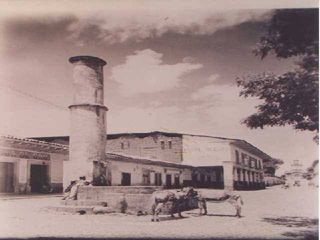
Once upon a time, before Mexico Cooks! was born, the small plaza in Pátzcuaro, Michoacán looked like the above photo. Part of the two-story building with the arches, just to the right of the photo's center, became the home of the Hostería de don Felipe, which had a dining room to serve its guests. Later, the Hostería was renamed Gran Hotel. In the 1960's, Rafael García Correa was a young cook in the Gran Hotel kitchen.
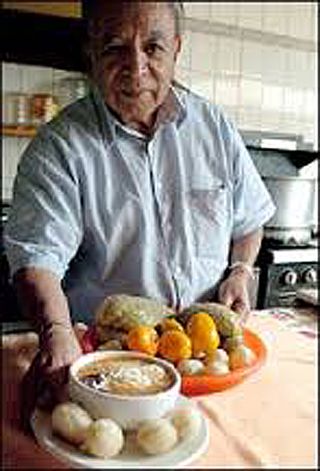
When I met Rafael García Correa in 1982, he was the head of the kitchen at the Gran Hotel. The photo above, taken in 2004 by Luis Jiménez of the New York Times during an interview where I was present, is don Rafa (don is an honorific title given to a revered older man) showing us a bowl of sopa tarasca in the foreground, along with a plate of corundas (a kind of Michoacán tamal).
Don Rafa told me that in the mid-1960s, he himself, along with the hotel's then-owner and the owner's American wife, invented a dish that, once offered to the public, became an almost instant classic: sopa tarasca was born, not created in an indigenous kitchen but for a tourist hotel's dining room. Today, we'd call that cocina de autor: the cook's invention.
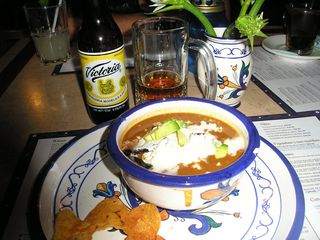
Sopa tarasca as served at Lu Cocina Michoacana in Morelia. Read more about the restaurant here.
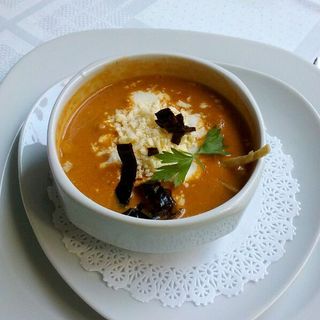
Sopa tarasca as served at the Hotel de la Soledad, Morelia. Some sopa tarasca is based on beans; some, like don Rafa's, is not.
Was don Rafa the inventor? He swore his story is true. He also gave me a hand-written recipe which he promised is the original. Don Rafa passed away a few years ago, and any possible secrets of sopa tarasca's origins were buried with him.
Don Rafa reported that sopa tarasca was served for the first time as part of a Pátzcuaro wedding banquet, on May 8, 1965. Years later, he opened his own restaurant near Plaza Gertrudis Bocanegra (the plaza chica) in Pátzcuaro. If you go to the restaurant, you can still enjoy a bowl of his own sopa tarasca.
Today, sopa tarasca is a Michoacán icon, prepared in almost every restaurant around Lake Pátzcuaro as well as in further-flung establishments. It's one of those you-have-to-try-it local dishes that people who know you've been to Michoacán will ask you about: did you taste it at so-and-so's restaurant? How about at this other place, did you like it there?
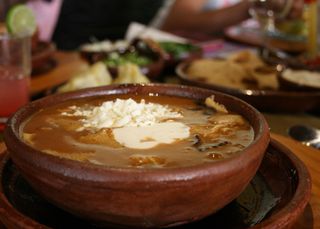
Sopa tarasca as served at Pátzcuaro's Mansión Iturbe, a hotel and restaurant.
Click on any picture to see a larger view.
Fortunately, sopa tarasca is a relatively easy soup to prepare at home. The ingredients should be readily available, if not in your nearby supermarket then at a Mexican market not far from you. The recipe I offer you here is don Rafa's, but there are others (notably an excellent one from Diana Kennedy) that are available either in books or on the Internet.

Sopa tarasca as served by chef Alma Cervantes Cota at Restaurante Azul y Oro Ingeniería, UNAM, Mexico City.
Sopa Tarasca Don Rafael García
Ingredients
500 grams tomato purée
2 tortillas
5 corn tortillas, cut into very thin strips and fried until crisp
100 grams chile pasillo, cut into thin strips and fried until just crisp. Be very careful not to burn the chiles, they fry quickly and burn in the blink of an eye.
250 grams Mexican table cream
100 grams Oaxaca cheese, shredded
50 grams all-purpose flour
100 grams unsalted butter
1 clove garlic
1 small white onion
10 cups rich chicken stock
Worcestershire sauce to taste
Salt and pepper to taste
1 sprig fresh thyme
1 sprig fresh marjoram or oregano
2 bay leaves
Preparation
In a heavy pot, prepare a roux with the butter and flour, stirring constantly so that no lumps form. Allow to cook until the roux is a deep caramel color.
In a blender, liquify the two tortillas listed, some of the fried chiles, and the onion. Add this mixture to the roux and continue stirring until it is well incorporated. Next, add the tomato purée, the chicken broth, the herbs, and salt and pepper to taste. Add half a teaspoon of Worcestershire sauce and taste; if you think more is needed, add bit by bit. Allow to simmer for 15 minutes.
Put equal amounts of the soup into each of 10 bowls. Garnish with fried tortilla strips, fried chile ancho or negro, some Oaxaca cheese, and some cream. You can add some cubed avocado and a few sprigs of cilantro. Take your cues from the photos I've included in this article.
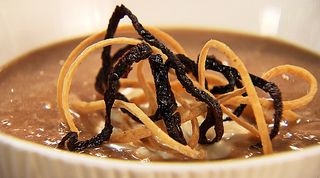
Sopa tarasca, garnished in this serving with fried shredded tortillas and fried shredded chile pasilla.
Serves 10.
Provecho!
Looking for a tailored-to-your-interests specialized tour in Mexico? Click here: Tours.

